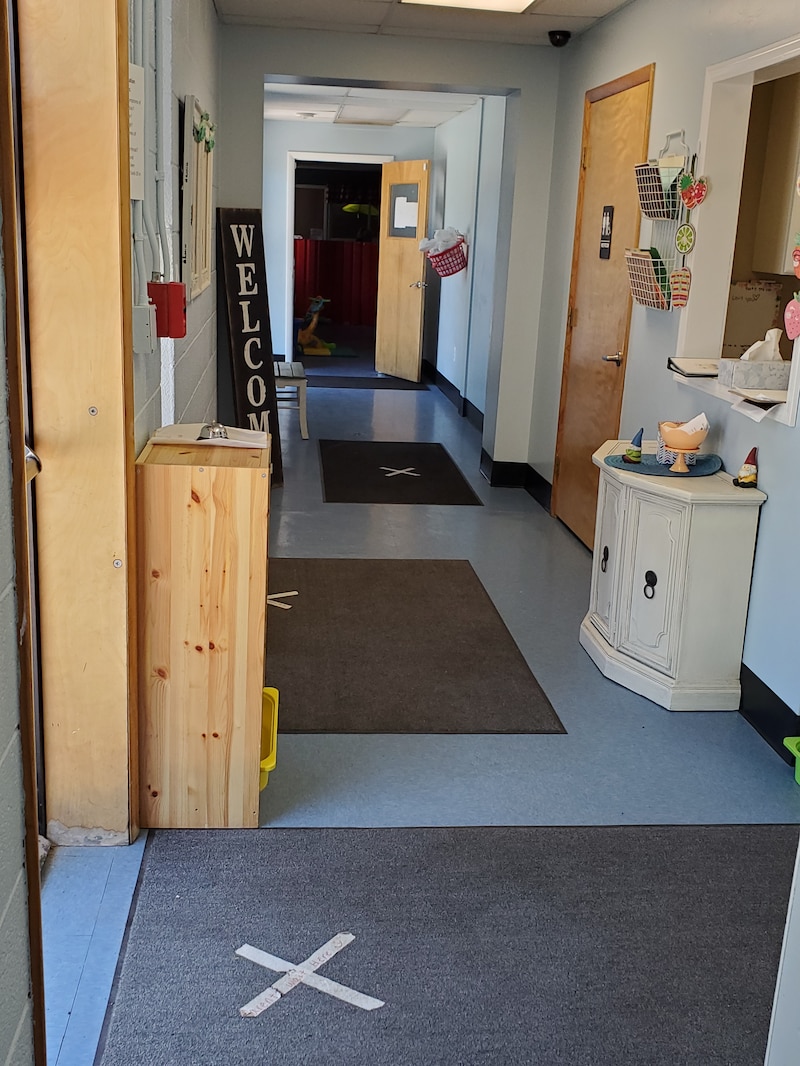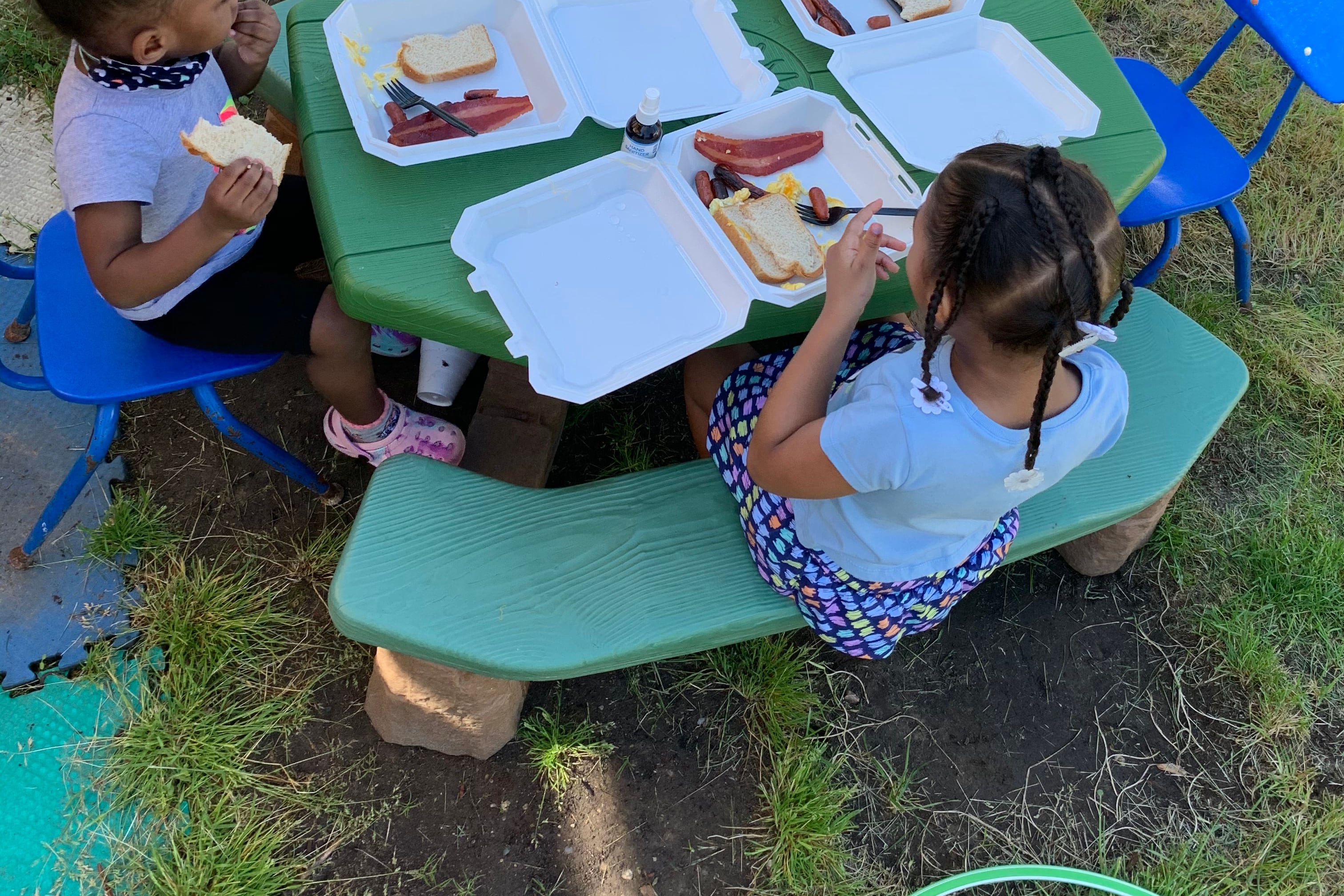Parents stand on one X when they arrive at Li’l Graduates Child Development Center. Their children walk to another, taped on the floor more than six feet away, where a staffer takes their temperature and asks if they’ve felt tired or developed a cough overnight.
“It’s kind of like a production line,” said Jamie Middaugh, director of the private center in Chesterfield. “We try to make it as homey as possible so that they can still have that family feel.”
The temperature check is one of the many changes the center made to prevent the spread of COVID-19 as the state lifts its stay-at-home order and more children return to child care.
While months remain before school-aged children in Michigan return to school buildings, a growing number of younger children need care now. More providers are reopening despite the challenges of limiting new COVID-19 infections, hoping to maintain their incomes and meet a community need.
That means the state’s patchwork system of private child care providers will be the first in the education sector to provide in-person, pandemic-era instruction. Just 10% of the roughly 1,000 private day care providers in Wayne County are currently open, according to officials at the United Way of Southeastern Michigan. More are preparing to welcome families back.
These small businesses, which are often run out of the provider’s home, are working to balance a dizzying and often contradictory array of safety and financial concerns.
How can centers pay for extra cleaning supplies while their financial margins, already razor-thin, get even tighter because of lower enrollment? How can they reassure parents who need a nurturing place for their child during the day but are terrified that their child will be sickened by the other children?
Michigan officials released a 14-page reopening guideline in May that addressed these questions. Providers who reopen will be required to submit a safety plan to the state based on those rules.
Those plans can’t guarantee that the coronavirus won’t spread at newly opened child care centers. But as more parents return to work and providers struggle financially, few programs have the option of staying closed.
“Bringing kids back together is going to increase the risk” of coronavirus infection, said Jeff Miles, director of the Center for Early Childhood Excellence at United Way for Southeastern Michigan.
“The safest way is to care for children in their homes, but we know that that is not a reality. Job number-one has got to be keeping these kids safe.”
The United Way is holding webinars to help providers reopen safely. In Detroit, Hope Starts Here, an early childhood education initiative backed by several local philanthropies, created an online tool to help providers create reopening plans that meet state criteria. Federal and state grants are helping to ease some of the financial pain.
Child care providers who have already opened their doors say they’ve shifted virtually every aspect of their operations to limit the spread of COVID-19.

Financial challenges
These changes aren’t easy or cheap, and they come as child care providers deal with the financial pinch caused by the crisis.
Li’l Graduates, which stayed open during the pandemic, saw its enrollment drop as low as 30 students, down from the usual 200, and has still only reached 60
“Right now we are really only making enough to pay the staff that are here, not the extra for bills and to keep the lights on,” Middaugh said.
Some federal COVID-19 relief funds are available to child care providers, but they’ve been slow to arrive, and it’s not clear that they’ll be enough to help providers stay afloat.
LaTonya Glover runs Bright Beginnings Child Care out of her home in Detroit, typically enrolling a dozen kids. She stayed open throughout the crisis because some of her parents are essential workers. But enrollment is down — zero children showed up this week — and she had been giving discounts to families who lost work. She’s expecting federal assistance funds through a grant from the state Michigan, but the money hasn’t arrived.
“You don’t want to rob Peter to pay Paul, but like maybe I’m going to charge this on my zero-interest card and wait for the payment to come,” she said.
An obligation to the community
Reopening isn’t cheap. In addition to purchasing a mountain of cleaning supplies, Felicia Legardy is providing individual masks, hand sanitizer, paper towels, hand soaps, and learning materials for each student at Crystal Swann Child Care, which she runs out of her home in Detroit’s Brightmoor Neighborhood.
What’s more, four of her 12 families didn’t return when she reopened on June 1, putting a $2,100 hole in her small budget each month.
This wasn’t unexpected, Legardy said. Even though she’s one of the only child care providers operating in her neighborhood, the community was hard-hit by the coronavirus — Legardy knows several people who got sick — and parents are being careful.
She decided to reopen anyway out of a sense of duty.
“After two and a half months [of caring for children at home], family members and grandparents were becoming a little bit exhausted because they’re not used to caring for little ones,” she said. “My parents need me.”
A new reality
As children return to care, they and their providers face a dramatically altered reality.
For providers, days are structured by a new rhythm of constant cleaning.
“We clean from the moment we walk into the building until we walk out at night,” said Katrina Stewart, program director at Ascension Early Child Care Center in Beverly Hills.
“Once we touch the laptop that we use to check the kids in, we clean the laptop.”
While there’s no way to ask toddlers to maintain physical distance from each other, the center’s health protocols became much stricter. Children and teachers are screened daily and anyone with a temperature above 100 degrees is immediately sent home. Parents are asked every day about the health of their families, and children are sent home if anyone in their household falls ill.
Playtime also has changed.
Following state guidelines, Legardy removed all cloth from her play area, including stuffed animal and dolls’ clothing.
One child said, “‘Where are the baby’s clothes?’” Legardy recalled.
“I said ‘Sorry, we had to put those clothes away.’ And she said, ‘But the baby is naked!’ ”
Later that day, Legardy said, a child came to her to be comforted, but she couldn’t put the child on her lap because of state guidelines.
“I just don’t feel right,” she said.







